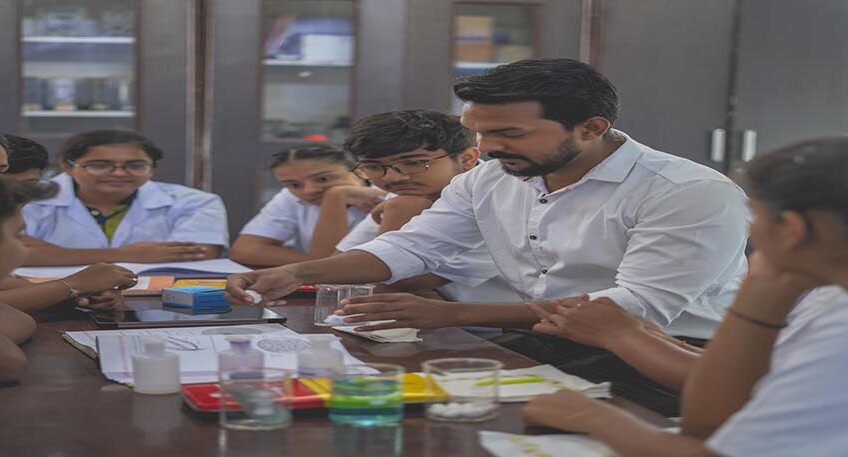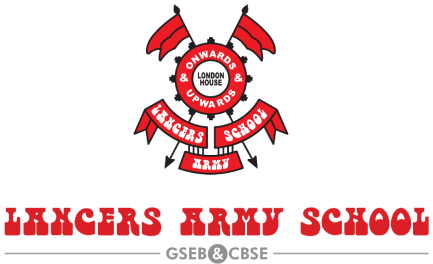
Revolutionising learning in GSEB board digitalisation of education also means, that we have to integrate the most advanced technology in the classrooms as well as a variety of methods of interaction between teachers and students. Moreover, individual learning experiences must be included in order to encourage self-studying. Through utilising virtual methods and tools like augmented reality and 3 dimensional simulations, the educators are able to create interactive lesson plans that can excite students with their appealing structure and hold the attention of students through varied learning patterns and thus deeper understanding and retention. Furthermore, the collaborative platforms and adaptive assessment tools are ways that teachers can customize instruction to the needs of each student which in turn promotes inclusivity and academic success.
Interactive Learning in Classrooms
Interactive learning in GSEB schools in Surat really surviving the ultimate break-through journey, namely, a process driven by the serious endeavor to utilize technology and get active, intense involvement by the students. The combination of interactive whiteboards, multimedia presentations and educational apps is changing the way teachers deliver lectures and making them more interactive and fascinating so that students can actively participate. Firstly, these kinds collaboration, or group activities become a platform where students exchange ideas among themselves, trouble-shooting problems together and acquiring the necessary communicative and teamwork skills employable in the modern world.
Similarly, the embracement of hybrid learning styles that contain face-to-face teaching with online materials and tools aids in increasing the availability of and flexibility for the delivery of content, meeting the unique learning needs of students and paces. With this interactive approach, GSEB classrooms in Surat are vibrant centers of creativity and exploration, where students are given the ability to take control of their learning process and develop a lifelong love for learning and discovering.
Inquiry-Based Learning in Classrooms
The inquiry-based teaching is no doubt making a notable revolution in the Gujarat Secondary Education Board (GSEB) schools in Gujarat as students are being inducted with the spirit of critical thinking and inquisitiveness. Educators who challenge students to inquire, select material to investigate and develop their own understanding, do so because they know it is just the right way to elicit learners’ deeper engagement with the curriculum and also teach them useful problem-solving skills. The students get to work on their own research projects, real-world investigations, and hands-on experiments. Thus, they participate in the learning process actively, and develop the ability to analyze information, draw conclusions, and communicate their findings effectively.
Moreover, inquiry-based learning in GSEB schools in Gujarat motivates student-centeredness, in which the teacher plays the role of a facilitator as he/she directs the flow of knowledge and encourages critical thinking and the start of various cultures. Through this method, not only the student’s academic performance is boosted but he/she is also in the limelight and turns out to be the one who has an irrepressible zest for learning and is totally in charge of his/her own learning process, ready for the more complicated and scarcely stable learning evolution of the world. The GSEB schools in Gujarat become the environments where students explore through inquiry-based methodologies, and they are happy, confident, and resilient individuals who are prepared for the success in the 21st century.
Fostering Innovation in GSEB Education
Fostering innovation in GSEB education, particularly in GSEB schools in Piplod, the establishment implies a multifaceted and targeted development of creative, analytical, and entrepreneurial skills among juveniles. Through incorporating into the educational process project-labeled learning initiatives, hackathons, and innovation challenges, teachers train students by immersing them in real-world problems and urgent necessity to face-up with challenges finding innovations to the most complex situations. Besides, cooperation with local industries and technology firms allows the students to get the mentorship, internship, and also the practical application by bridging the gap between classroom learning and practical application.
In addition to this, the setting up of innovation hubs and makers’ spaces within GSEB schools in Piplod acts as a tool of opportunity to drive creativity and collaborations where students can innovate with upcoming technologies, prototype devices and do multidisciplinary project. These programs are not only the sources of technical skills but also the place where students can develop an entrepreneurial attitude, which means treating failure as a ladder to success and seeing themselves as the future leaders of the communities and the world. In growth of a culture of innovation, GSEB schools in Piplod are shaping the students to be successful the ever changing world and the society as well onto make the overall contribution.
Flexibility in GSEB Classroom Design
The design of GSEB classroom flexibility is the key to adapt any learning style, support collaboration and constantly brush up the educational need. Adapting the furnishing arrangements, creating the modular learning spaces, and using the movable partitions, the classrooms can easily move from the lecture-style instruction to the group work sessions and to the independent study periods. In addition to the adaptability function, which serves as a major motivator for students, it also aids instructors we can adjust the learning environment settings as well as meet instructional objectives and different class sizes and activities.
Furthermore, when the technology infrastructure like interactive panels, network connections, and diverse power sockets is integrated into the classroom, GSEB classrooms then become more versatile for both traditional classroom methodology and digital learning to help students comprehend the digital learning material. Through the adaptation of flexible classroom design in GSEB schools, the students and teachers will be inspired by creativity, innovation and feeling of ownership and empowerment. Therefore, the learning experience will be enriched and the academic success will be promoted.
Frequently Asked Questions
Q1. How have GSEB classrooms evolved over time?
A. Classrooms of GSEB now are renovated from the traditional lectures which were the root cause for passive learning and the introduction of technology has changed the classroom design. Interaction,collaboration, personalized instruction and also the curriculum provides the flexibility in design and teaching methodologies.
Q2. What are the key features of a modern GSEB classroom?
A. The major characteristics of a contemporary GSEB environment entail integrating technology, creating variability in the classroom fittings, having collaborative places, applying personalized learning approaches, using interactive tools for teaching and emphasizing creativity, critical thinking and student engagement.
Q3. How do modern GSEB classrooms differ from traditional ones?
A. GSEB classrooms of today place more emphasis on interactive learning, technology integration, flexibility in design, and personalized instruction, thus differentiating from traditional classrooms that mostly rely on lecturing, rigid furniture arrangement, and limited use of technology.

